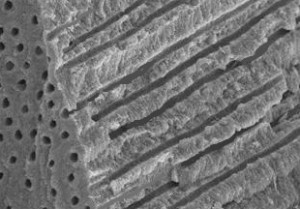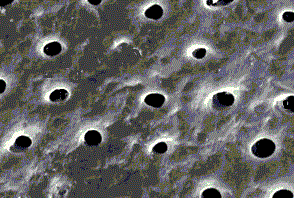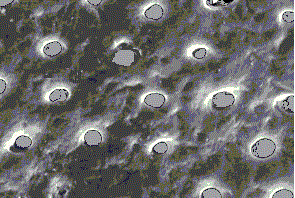Dentine Hypersensitivity
Dentine Hypersensitivity can occur after a number of different events:
- After periodontal treatment.
- If there is gum recession
- After using whitening toothpastes (~66% of subjects will develop sensitivity with prolonged use of whitening toothpastes).
Dentine is the root part of the tooth and it has many small tubes within it and these tubes go from the pulp or nerve in the tooth to the outer edge of the dentine or root of the tooth. The dentine is usually covered by a fine layer of a material called Cementum. If this cementum is removed off the surface of the dentine than these small tubules become exposed to the mouth. The top two micrographs to the right show the tubules in the dentine and the surface of the dentine after the removal of the cementum. Osmotic movement of fluid within the tubule will lead to a pulpal nerve response felt as pain.
If we place cold fluids, metal or sweet liquids on the surface of the dentine than the fluid in the tubules will move and this will trigger the nerve inside the tooth and give you pain. To treat dentine hypersensitivity we need to block the tubules and stop the fluid movement.
Treatment of Dentine hypersensitivity can be achieved by a number of different methods:
- Desensitizing toothpastes ;
- Dentist applied sealants to the dentine;
- If none of the above work than the dentist may place a filling in the tooth.
The bottom micrograph to the right shows the dentine with the tubules blocked.
If you come to our surgery please let us know if the teeth are sensitive. We can give you a prophylaxis with special pastes to reduce the pain.
© Penam Investments Pty Ltd 2020
Translate This Page

Dentine tubules. These extend from the surface of the dentine to the dental pulp. Fluid movement in these tubules initiates the nerve response and your pain.

Dentine tubules on the tooth/dentine surface.

Dentine tubules after application of tubule blocking dental toothpastes.